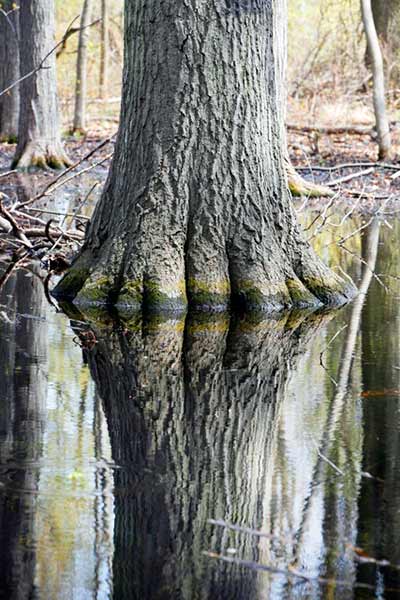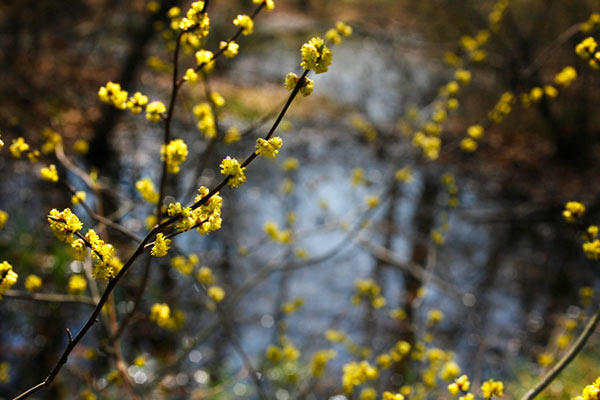Belle Isle’s ecological stewards take no invasive species prisoner
A group of Belle Isle activists have a message for plant invaders of the islands old growth forest and idyllic natural areas: Get out and stay out. Those that don’t listen, get the loppers.
For the first time in its history, the city’s island park is being taken seriously as an ecological habitat.
This is significant, because nearly half of Belle Isle’s almost a thousand acres is old-growth wet, or “mesic,” forest. It is an important wildlife habitat, especially serving as a feeding ground for migratory birds.
Melvadean “Mebby” Pearson is a member of the Friends of Belle Isle’s (FOBI) new stewardship committee, and the group is leading the charge to help give the island’s nature areas a boost. “We are a preservation group, and ecological preservation is very important to us,” she says.
Ridding the island of invasive species is top priority for the fledgling effort, which kicked off in January of this year. Its foundation of strong partners and bevy of committed volunteers are already making an impact on improving the island’s health.
Profile of a steward
Pearson is a certified conservation steward via the Michigan State University Extension Center, a master gardener and composter, and an ecological gardener. She’s worked in St. Clair, Macomb, Livinsgston and Oakland counties on issues of water quality through the Michigan Groundwater Stewardship program and describes herself as having a general “interest in ecological issues” and says, “I love being outside.”
Pearson and her family moved to the metropolitan area almost two decades ago from St. Louis when her husband was transferred to Wayne State University. She worked as a court reporter for many years, but stepped back to raise her kids, all the while volunteering and retraining herself.
One of the reasons Pearson is so fascinated — and dedicated — to Belle Isle is because of her particular interest in invasive species and the island’s inherent, well, island-ness. Because it’s an island, “this is the place you can keep, (invasive species) confined.” For example, garlic mustard is enjoying a reign of terror around the state, but it has yet to show up on Belle Isle.
She says the region’s collective love for Belle Isle has made it easy to recruit people for the cause. “To get people to start to pay attention and come out to help … this is tangible,” Pearson says. “The idea, as a conservation steward, is to get people to come out and be stewards of the island and, at some point, contribute to that love of place.”
Go back from whence you came (Ode to Invasives)
The primary reason the forest is significant is that it’s a feeding ground for migratory birds, but there’s never been a concerted effort to manage or maintain the habitat. Result: invasive species have taken root. “Honeysuckle and privet don’t have a place in an old-growth forest,” Pearson says. “They shade out native plants … and keep native flowers from coming up.”
Invasives have especially taken hold along the paths that wind through the woods. “They’ve been there a long time — and we’re not proposing they be closed. But along the paths is disturbed soil, and that’s where invasives like to grow,” says Pearson. She leads a group of volunteers once a month down the path. Invasives are cut back and then treated with water-safe chemicals. In just three months of work, they’ve gotten halfway down the path.
In what may be the first instance of fire being a positive for Detroit, the city’s Recreation and Forestry departments, the Michigan Department of Natural Resources, FOBI and Ann Arbor-based ecological consultant JFNew are facilitating prescribed burns as another way to help rid Belle Isle of some invasive species.
In the forest, they are burning the common reed (Phragmites australis) to allow the native forest understory to regenerate, and in the wet prairie areas, they are targeting both phragmites and purple loosestrife (Lythrum salicaria) to promote the growth of native warm-season grasses and plants.
The FOBI committee also is focused on the eastern end of the island, where purple loosestrife has taken hold. The FOBI stewards are working with the Detroit Forestry Department and the Detroit Zoo, the organization that runs the Belle Isle Nature Zoo, to remove goose eggs from the island to control population.
Pearson takes a long view of the work to be done. “We’re just going to continue applying for grants,” she says. “We are doing this as a systematic thing.”
One last little nudge from Pearson: “To be involved with group like FOBI is very rewarding.”
How you can get involved
The Stewardship Committee of the Friends of Belle Isle hosts monthly workdays, which start at the Nature Zoo at 9 a.m. with breakfast and a hot drink and run until noon. The next one is this Saturday, April 24, coinciding with the FOBI’s island-wide clean-up. To RSVP for the woodland cleanup, contact Pearson at 248-647-7841 or Melvadean.Pearson@gmail.com; to contact FOBI about the general clean-up, which meets at the Casino, call 313-331-7760.
Kelli B. Kavanaugh is development news editor for Model D. Send feedback here.










